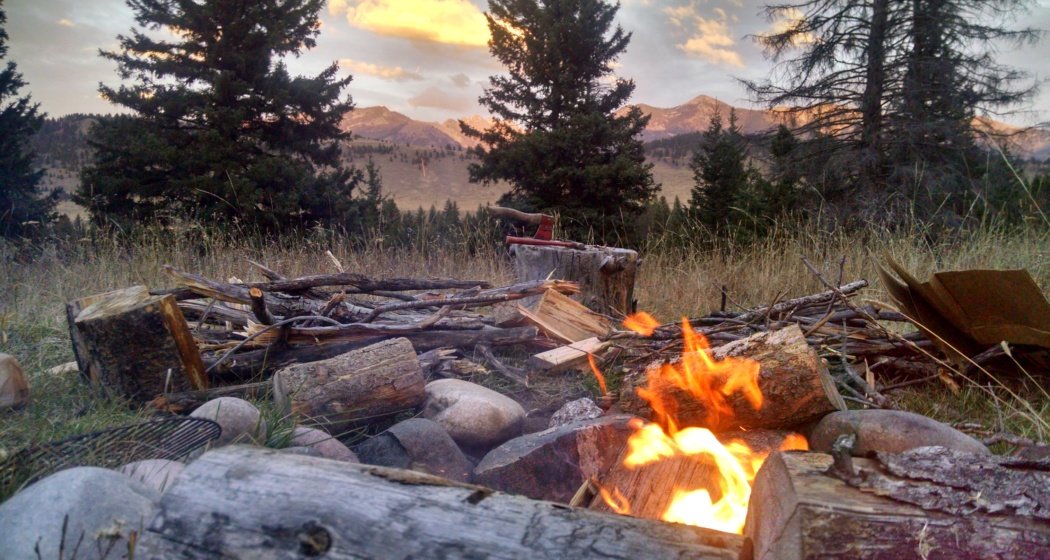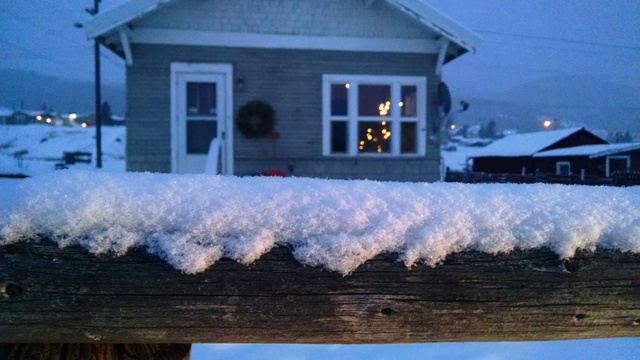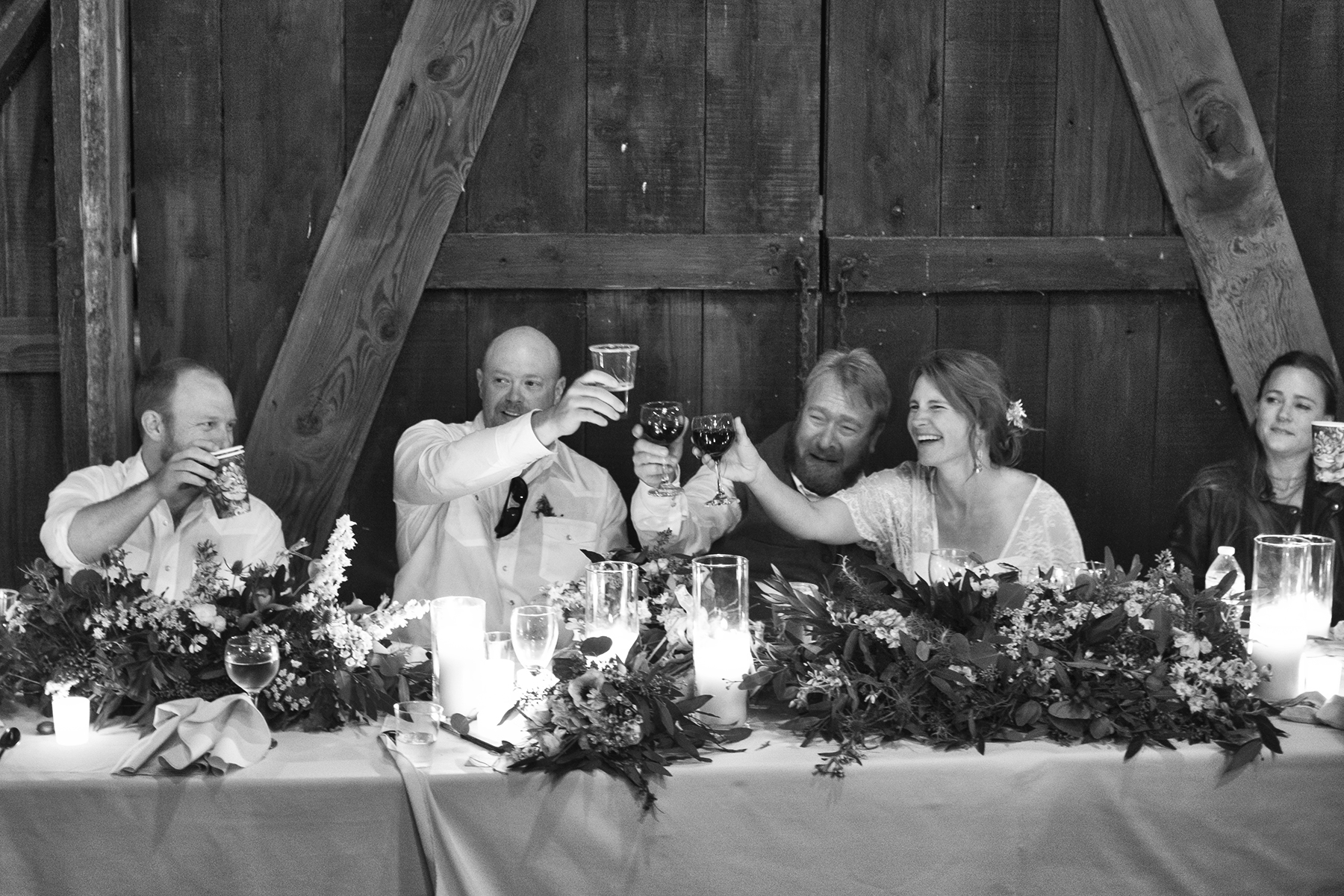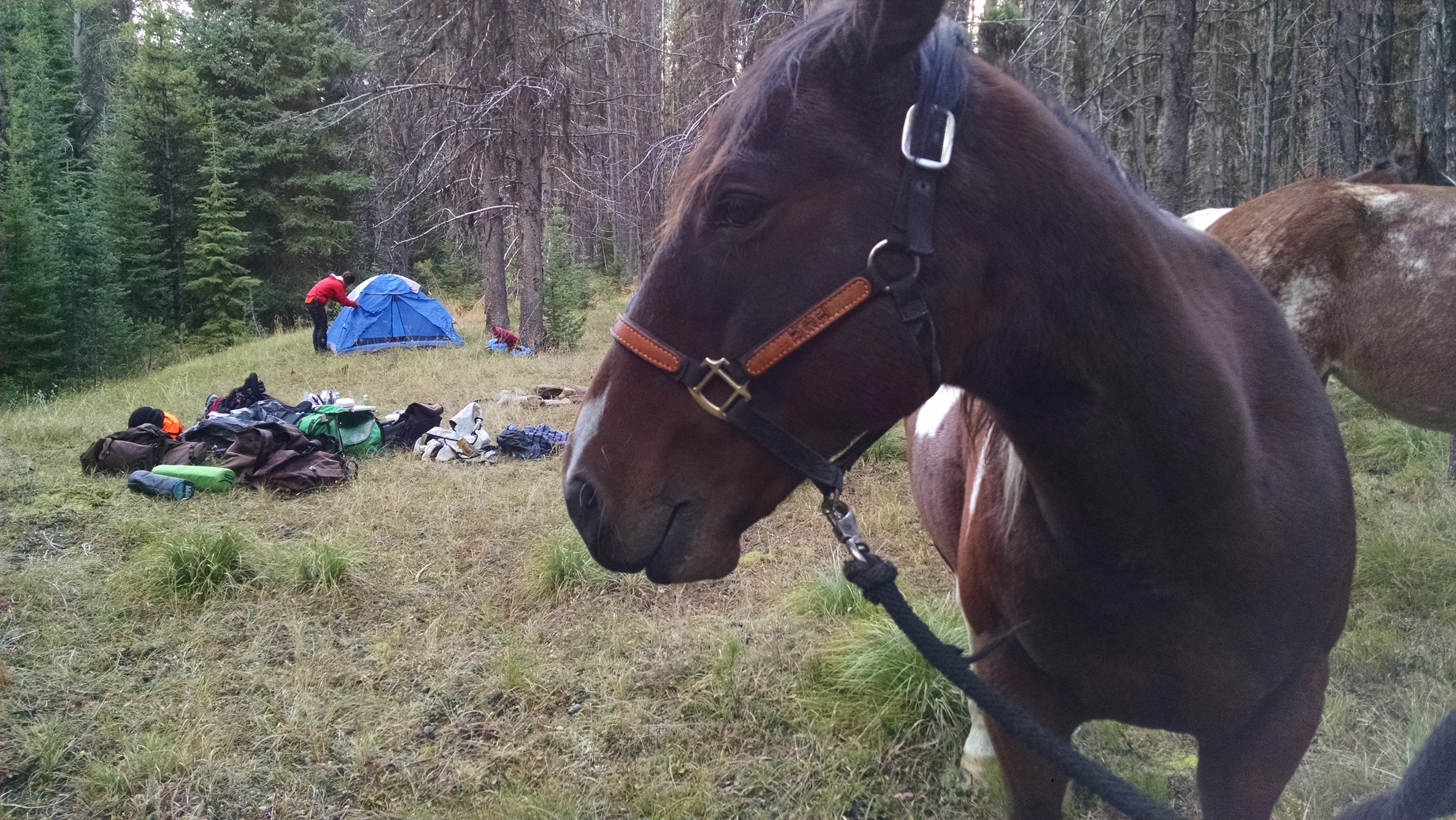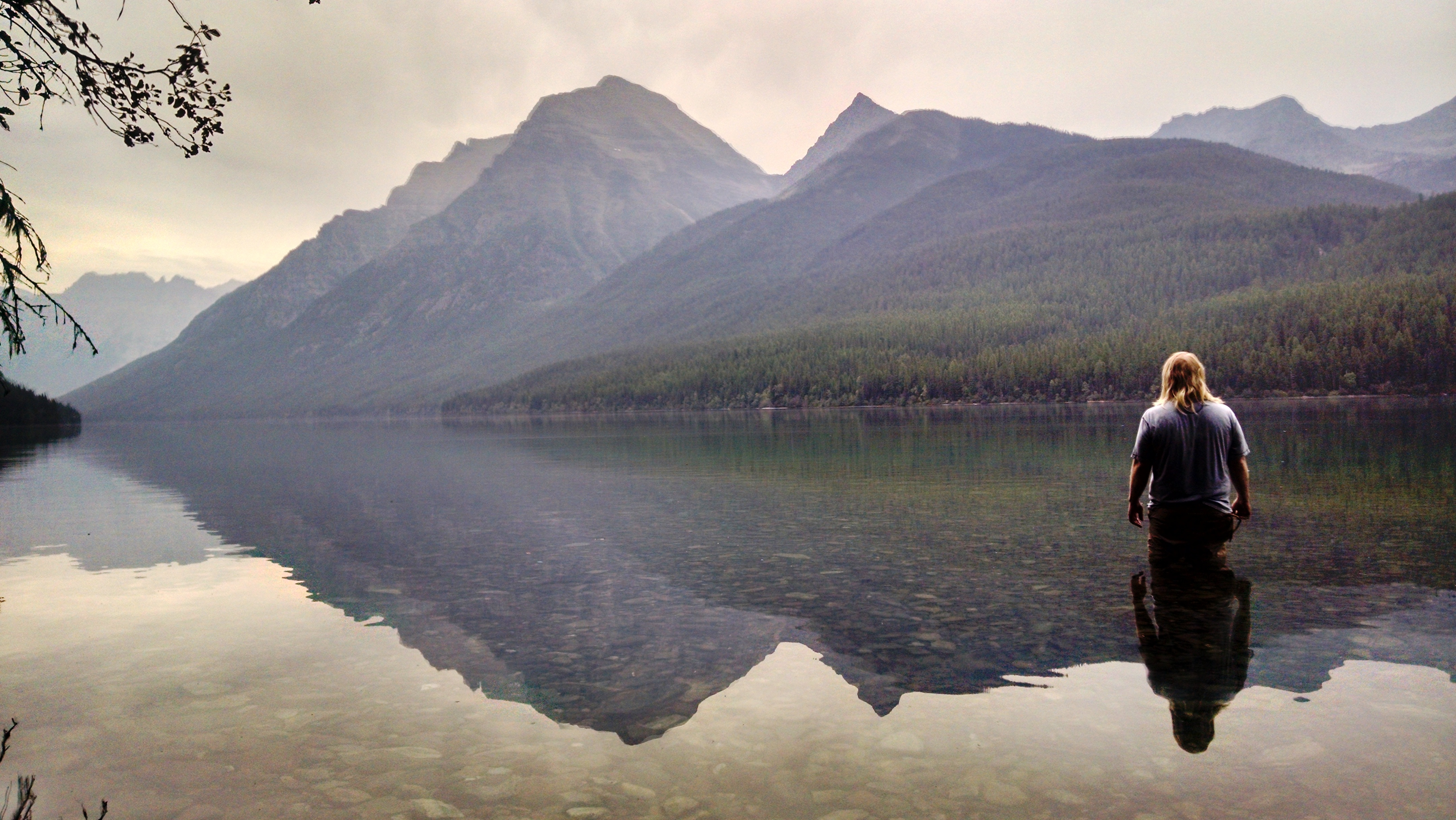I knew it was morning as my nose poked out of my sleeping bag like a mole. I just wasn’t quite ready to peel my knitted beanie off over my eyes and deal with what was outside my tent in the daylight.
I could hear the crackle of the fire and the horses shuffling where we had left them, tied in a highline in the cover of thick pines the night before as a light rain fell. My toes – triple-socked in thick merino wool – searched out the large rock that had been heated in the embers of our fire and pushed to the bottom of my bag before I had wormed my way down in the darkness nine hours before. I had zipped myself up tight, wearing every dry layer I had brought, thinking that it was going to be one long and miserably cold night, even with two horse blankets between me and the ground.
At some point in the early hours I woke up and realized that despite the seemingly sub zero temps when I went to bed, I was, at 3 a.m., oddly snug. Now, as I scooted to the front and slowly zipped it open in a half moon this morning, the flap fell back, revealing why.
It wasn’t the muddy mess of a camp I had expected. Instead, a layer of snow blanketed everything in white. The light tuffs had nearly doused our fire, but had insulated us in our fabric huts through the night.
This was disorienting for me in the first week of October. The flip flops I had brought as camp shoes, leaving them just outside the tent if I had to get up in the middle of the night, were now barely visible under the snow. I heard the crunch of boots and Chelsea, the wrangler in charge of the horses that got us out here in the heart of the Bitterroot National Forest, grins when she sees me surveying our camp.
“Merry Christmas,” she calls out cheerily, heading to the fire to revive it for coffee and a breakfast of elk sausage and potato hash.
There are three of us on this overnight trip with the sole purpose of cooking up and dishing out a stellar feast in the middle of nowhere, warmed only by fire coals: Jason, the chef, myself, the server, and Chelsea are all paid to be here, having been sent out a day ahead to prepare this lunch for a small group of Triple Creek Ranch guests on a day ride into the backcountry. But this morning, as two inches of snow covered the landscape, we wondered if the ride would be called off and this excursion would be nothing but our own adventure into a winter weather warning. Without radio or cell contact, we had no way of knowing if they would show up. Our job was to build it, keep the fire stoked, and hope they would come.
None of us were complaining that this was all on the clock the previous morning. We loaded up four horses and a mule named Cricket, and headed for the Little Blue Joint Creek trailhead with tents, sleeping bags, and food for our meals as well as a lunch of roasted butternut squash, pan seared halibut, foccacia bread, and berry nut crumble that Jason had spent that morning prepping and packing up in the Triple Creek kitchen as I loaded up coffee and sliced lemons for the guests. While we spent the winding truck drive on Highway 93 along the West Fork to our starting point above Painted Rocks Lake sharing how we had each come to live in Montana, before unloading the horses, measuring out supplies and figuring out what horse was best suited to each weighed-down soft pack, the ride itself was quiet as we fell into line on the trail. Both Chelsea and Jason ponied a pack horse behind them; I took the rear, as the least experienced packer of the three, riding a big, calm grey gelding named Opus, and watched for anything that might come loose and slip off as we headed north.
The clouds gathered and darkened above the trees and the rain came and went. The temperature through the afternoon warmed a few degrees and hats were pulled off and shoved into coat pockets. We started off navigating a trail through a dense forest that gave way to clearing after clearing as our horses plodded on, picking their way over rocks on narrow paths that overlooked Little Blue Joint Creek down below. Across from the ledge we rode carefully along, trees shone yellow and gold, a line of them climbing up towards peaks that had already been dusted in snow, a foreshadowing of the elements headed our way.
This was my first time on a horse in nearly three years – maybe the longest I’d ever gone without being in a saddle since I was 8, after buying my first pony for $75 with Christmas and birthday money I had saved up, moving on to leasing a feisty Arabian named Nissana when I was 11. The last time I’d spent any time in the saddle was on a two-day ride in the Catlins coast, on the South Island of New Zealand in 2013, when I’d borrowed a horse to cover the event for the Southland Times newspaper, a camera slung around my shoulder and waist as we galloped down Tautuku Beach. All through that summer leading up to that I had ridden a neighbor’s horse on the beach and through the dunes when I’d get home in the evening, grabbing apples and a handful of cookies as I went out the door for dinner like I was 10 again.
After a few hard falls over the years, I wasn’t as fearless as I used to be. But I knew that I had missed being on and just around horses – and maybe I hadn’t realized how much, I thought, as we rode on, with lots of time to let our minds wander and probe the direction we were going in.
We only had about two good hours of daylight by the time we arrived at the small meadow where the guests would meet us the following day. Instead of hobbling the horses, I gave Chelsea a leg up so she could balance herself on Cricket’s back and set up the highline that wound through the trees above them, where they were each tied and could graze. We took turns leading each of them to the creek, where their muzzles touched the water to test the temperature before either plunging in or lumbering back to the bank to join the others. Jason had gone to work cracking thick limbs into pieces for firewood, working steadily with an axe to fell small trees that landed with a satisfying thud as we stood back and watched. Each of us was in our element here, in our own, unique way to our ability. And each equally awed by where we were. The beauty and isolation of the evening settling into the mountains, the crackling of the fire, the satisfaction of setting up our tents and laying out our gear, of having the saddles lined up neatly on a log behind us as dinner simmered and the light began to fade, of warm socks and headlamps turning on – all of this was a reminder of why we had chosen this place to build, or even rebuild our lives. It was evenings like this that people like Chelsea and I had longed for when we lived in cities, bound to a metropolis by our careers, yet longing for something wilder. For Jason, who was a Montanan native, it may have been a reminder of why he had come home.

I went to sleep that night, listening them talk around the fire about horses they had loved in their lifetime and how they had been altered by that friendship, learning how to trust a creature far more powerful and headstrong, and in turn, earning that trust back. It struck me that I hadn’t had that kind of connection to a horse since I was young – and how as I was getting older, getting slower and maybe more cautious, I wanted not so much the adrenaline of racing down a beach on a horse I didn’t know, as much as that quiet bond, earned and tested every time you greeted each other with a bucket of grain and a halter in the morning.
As I finally climb out of my tent, pulling my boots and another thick layer of socks with me, I see the clear skies sparkle over snow and hear the horses nicker to each other in the cedars. The fire flares up again as Chelsea throws a moss-covered branch on, and cowboy coffee gurgles away on the coals, the scene before us does actually have a Christmas morning feel to it.
Our guests did arrive in the end, riding into camp just as the weather turned for the worse again. Hands reached out from the long sleeves of oilskin jackets to grasp hot tea and cider; the hanging table the three of us had proudly worked on the evening before, complete with Yuletide-like branches woven through the tree limbs we had tied together with spare rope and suspended from hefty branches above, had steaming plates of penne pasta and halibut, bread warmed in foil by the fire along with the butternut squash. Despite the drizzle that came and went in the quick hour they were there, the mood was ebullient. They mounted up and rode out and we went to work to load up leftovers along with gear.
Our packing was haphazard in the rush to get to the truck and trailer before dark. Cricket, carrying a black plastic bag our sleeping bags that we had thrown on her and wrapped tight with rope, then freed to go lead-less, soon had a lopsided load as she stopped to graze, then trotted freely along to catch up. We stopped a few times to readjust, and at one point to collect the sleeping bags when they tumbled out, then finally gave the it one last tie-down and hoped it would be enough to get us back to base as the light lowered over the peaks. The horses were even more eager to be back, and we sliced an hour off our time from the previous day, unloading fast, and lowering the trailer door as Chelsea started the truck and turned the heater on. Cricket, without any prompting, hustled in, before anyone had a chance to take her pack off, looking back at us like I’m outta here.
It was twilight by the time we hit Highway 93 after a bumpy gravel road drive from the trailhead. We reeked of campfire smoke, our hair was matted and our boots were covered in mud and the cold had begun to seep into our toes. I was saddle sore and exhausted, but happy in that way that only 24 hours in the mountains can induce, with that lovely anticipation of a beer and a hot shower just ahead.
A few miles from the ranch we braked for a herd of elk crossing, then just stopped to watch them move across our headlights on the road. We were quiet as they leapt over a fence, one by one, and into a field. Then they disappeared into the darkenss. There was a sense of reverence as the stars began to come out above us and the night came out in full.
None of us had to say it as we sat there and took this in, before the truck was put into drive and we carried on: At that moment there was no better place to be.

